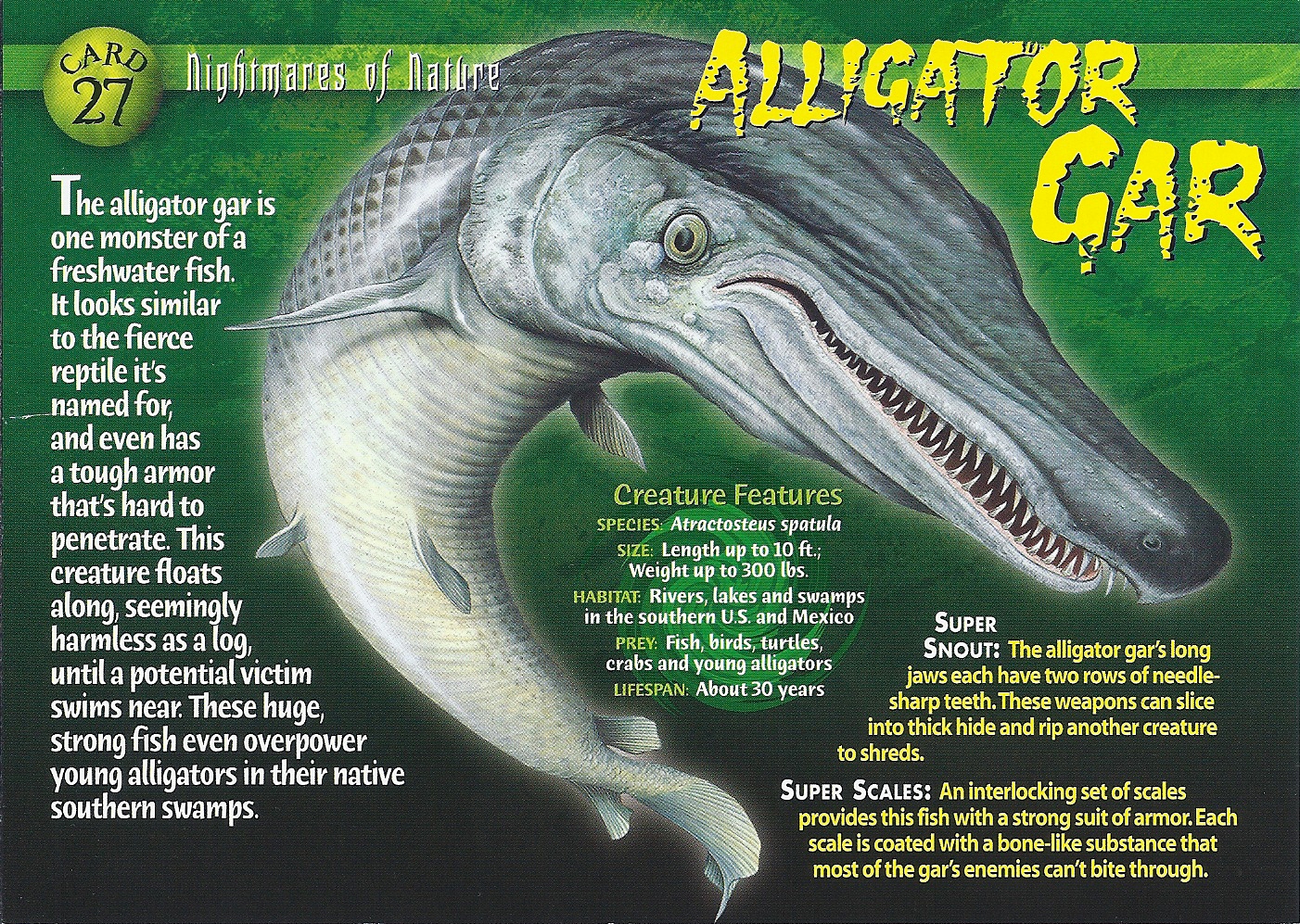

Young alligator gars possess a light mid-dorsal stripe bordered by thin dark lines from the tip of snout to the dorsal fin, and a dark lateral band extends along the sides with irregular borders. The alligator gar is dark olive-green dorsally, fading to yellowish white ventrally. The inner row of teeth in the upper jaw is palatine and larger than the outer row of teeth. The alligator gar is distinguished from other gars in the United States by its relatively short, broad snout which has two rows of fang-like teeth in the upper jaw. This allows gar to breathe when there are very low oxygen levels in the water. This enables them to gulp air, which aids in facultative air breathing. Gars also have a highly vascularized swim bladder connected to the pharynx by a pneumatic duct. Gars have retained the spiral valve intestine a primitive feature of the digestive system commonly associated with sharks. Gars bodies are covered by ganoid scales, which are thick overlapping scales that create a protective covering similar to medieval chainmail. The dorsal and anal fins are located very far back on the body. The caudal fin of the alligator gar is abbreviate-heterocerical, meaning the tail is not symmetrical.

Alligator gar prefer large rivers that have a large overflow floodplane, but these rivers have all but disappeared in North America due to the use of dredging, dams, dikes, and levees.Īll gars have an elongated, torpedo-shaped body. Young may be seen at the surface in debris such as leaves and twigs. The alligator gar is the most tolerant gar species of high salinity and occasionally strays into salt water. Two fishermen in Texas were shocked when they reeled in a rare, black alligator gar last week. The alligator gar inhabits large, slow moving rivers, reservoirs, oxbow lakes, bayous and bays, in fresh and brackish water. Numbers for alligator gar are dwindling due to habitat loss (they prefer wide, slow-moving rivers which are being dredged and restructured) and over-fishing, and are now protected in many areas. Their scales are heavy and overlapping like chain mail, and their small fins are set far back near their abbreviated, irregular caudal (tail) fin. They generally grow to 6.5 feet long and over 100 pounds, but have been caught significantly larger. The dorsal, anal, and caudal fins of the Alligator gar often have oval-shaped black spots. These elongated torpedo-shaped ‘living fossils’ have long, broad snouts with two rows of sharp teeth in their mouths. Young alligator gars possess a light mid-dorsal stripe bordered by thin dark lines from the tip of snout to the dorsal fin, and a dark lateral band extends along the sides with irregular borders.


 0 kommentar(er)
0 kommentar(er)
